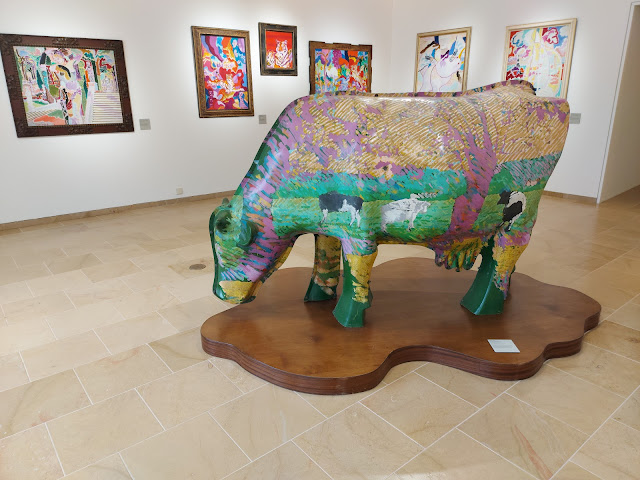 |
| Dijon is the historic capital of Burgundy. |
 |
| Notre-Dame of Dijon is the church for you if you like gargoyles. |
 |
| The church was built in the 13th century, and restoration is ongoing. |
 |
| Spooky |
 |
 |
| The stained glass windows are also from the 13th century; some of the originals still exist. |
 |
| The lucky owl on the side of the church is one of Dijon's main symbols. |
 |
| Many half-timbered houses with colorful tile roofs still line the streets. |
 |
| The Ducal Palace houses the Musee des Beaux-Arts de Dijon. |
 |
| A slightly off-putting well |
 |
| Fancy containers from the 13th century |
 |
| An impressive reliquary |
 |
| Limoges enamel |
 |
| An Altarpiece of Saint Margaret from 1480 |
 |
| Altarpiece of Emperor Augustus and the Sibyl of Tibur from 1435 |
 |
| Altarpice of the Magi from 1475 |
 |
| Lands ruled by the Duke of Burgundy before Charles the Bold's death in 1477 |
 |
| Charles the Bold on the right with his parents Philip the Good and Isabella of Portugal |
 |
| A 14th century altarpiece from Ypres |
 |
| The funerary crown of Philip the Bold, founder of the Burgundian branch of the House of Valois |
 |
| The tombs of Philip the Bold, John the Fearless, and Margaret of Bavaria |
 |
| The morning star really seems unusable. |
 |
| Zweihanders |
 |
| Detailed powder flasks |
 |
| Limoges porcelain from the 16th century portraying Roman Emperors |
 |
| Moo |
 |
| The Church of Saint Michael (left) was built in the 16th century. |
 |
| It's entrance is well maintained. |
 |
| The church next to Saint Michael's houses a museum of sculpture by Francois Rude. |
 |
| Fibulae |
 |
| Saint Benignus had a rough life. |
 |
| Boo! |
 |
| Sequana, Gallo-Roman goddess of the river Seine, who's source is near Dijon. |
 |
| Church crypts make great lapidariums. |
 |
| France may have the best burgers in the world. And you can't get foie gras burgers in California. |
 |
| Great wine, strange name |
 |
| Dijon captures all of France's charms. |





No comments:
Post a Comment